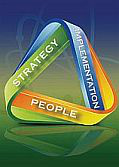Speaker
Ariane DONARD
(CEA)
Description
Analysis of “environmental samples” which consists in dust collected with cotton clothes wiped by inspectors on surfaces inside declared nuclear facilities is a key tool for safeguards. Although two methods (fission tracks-TIMS and SIMS) are already used routinely to determine the isotopic composition of uranium particles, the laser ablation-inductively coupled plasma mass spectrometry (LA-ICP-MS) coupling has been proven to be an interesting option thanks to its rapidity, high sensitivity and high signal/noise ratio. At CEA and UPPA, feasibility of particle analysis using a nanosecond LA device and a quadrupole ICP-MS has been demonstrated. However, despite the obvious potential of LA-ICP-MS for particle analysis, the effect of many phenomena which may bias isotope ratio measurements or lead to false detections must be investigated. Actually, environmental samples contain many types of non-uranium particles (organic debris, iron oxides, etc.) that can form molecular interferences and induce the risk of isotopic measurement bias, especially for minor isotopes (234U, 236U). The influence of these polyatomic interferences on the measurements will be discussed. Moreover, different uranium isotopic compositions can be found in the same sample. Therefore, risks of memory effect and of particle-to-particle cross-contamination by the deposition of ablation debris around the crater have also been investigated. This study has been conducted by using a femtosecond laser ablation device coupled to a high sensitivity sector field ICP-MS. Particles were fixed onto the disks with collodion and were located thanks to their fission tracks so that micrometric particles can be analyzed separately. All uranium isotope ratios were measured. Results are compared with the ones obtained with the fission tracks-TIMS technique on other deposition disks from the same sample. Performance of the method in terms of accuracy, precision, and detection limits are estimated.
| Country or International Organization | France |
|---|
Author
Ariane DONARD
(CEA)
Co-authors
Christophe PECHEYRAN
(LCABIE CNRS)
Fabien POINTURIER
(CEA)

